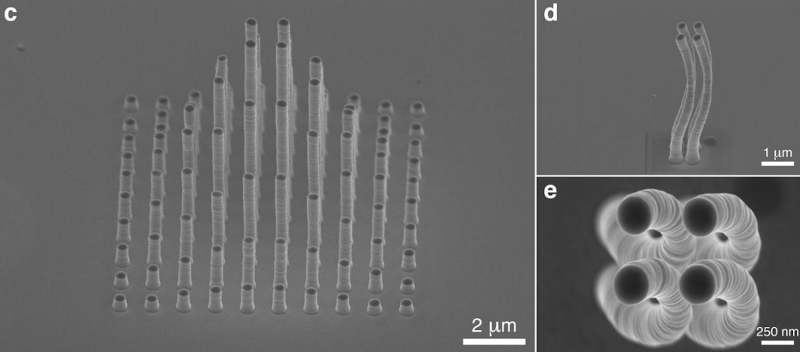Using a process akin to electroplating, researchers at the University of Oldenburg have 3D printed structures at the 25 nanometer scale. A human hair, of course, is thousands of time thicker than that. The working medium was a copper salt and a very tiny nozzle. How tiny? As small as 1.6 nanometers. That’s big enough for two copper ions at once.
Tiny nozzles are prone to every 3D printer’s bane: clogged nozzles. To mitigate this, the team built a closed-loop control that measured electrical current between the work area and inside the nozzle. You can read the full paper online.
The size of the objects depends on the nozzle size and other electrochemical parameters. At 25 nanometers, that’s fewer than 200 copper atoms. Printing with a powder, for example, bottoms out at about 100 micrometers. Very tiny indeed. You have to wonder if we will see small-run ICs printed in the next few decades. We aren’t sure what else you will do with tiny structures like that.
If you don’t mind making things a little larger, you can set up your own metal plating printer. But be warned: they are slow. Not really the same thing, but just like you can have 3D printing pens, you can also make electroplating pens.















Where’s the Benchy? :-)
I looked at the stuff they did print and it looks like they don’t have as fine of control that is needed, despite being able to do 90 degree overhangs with no support at all. The ‘E’ ‘T’ ‘H’ doesn’t look quite right.
link: https://pubs.acs.org/na101/home/literatum/publisher/achs/journals/content/nalefd/2021/nalefd.2021.21.issue-21/acs.nanolett.1c02847/20211103/images/medium/nl1c02847_0003.gif
I’m just envisioning someone printing tiny antennas capable of directly transmitting and receiving light.
IIRC, tiny antennae are used in the animal kingdom to detect Infrared.
I haven’t looked into it in a few years, but apparently the technology to create light antennas is already accomplished…the big hurdle has been developing rectifiers that can cope with terahertz frequencies.